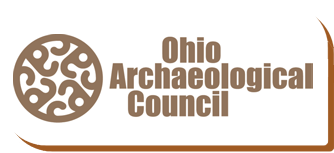-
by Michael Markey and Gavin A. Markey
Armco Park Mound I and Armco Park Mound II are listed as sites of special historic significance in Warren County, Ohio. Further, these Adena mounds have been on the National Register of Historic Places since 1975. However, since that time, much of the surrounding area has been developed as residential subdivisions, golf courses, and a public park. With changes in land ownership, the existence of these mounds was sometimes noted in records, but their specific locations were not. Amateur exploration of the park to determine the state of these mounds revealed that Armco Park Mound II has been destroyed, while Armco Park Mound I represents just one of five mounds in close proximity, four being only now discovered and described here. These potentially represent well-preserved examples of Adena earthworks which have only narrowly avoided destruction in recent years.
Keywords: mound, earthwork, Adena, Hopewell
-
by Leeanne Mahoney
Site 33Ha899 is a Late Archaic site on an upland ridge over the Great Miami River. The results of the archaeological investigation identified several hundred clustered pit features attributed to semi-permanent or repeated seasonal occupation. Sites such as these are poorly represented in southwest Ohio. Decades of development of lowland areas contribute to increased site identification in the lowlands compared to the uplands. The discovery of Site 33Ha899 indicates that upland locations were likely to be more intensely occupied during the Late Archaic period than previously understood and contributes new data towards understanding Late Archaic settlement strategies in southwest Ohio.
Keywords: Archaic, Upland, Southwest Ohio, Great Miami River, base camp.
-
by John Volker
In their 1982 paper, Geometry and Astronomy in Prehistoric Ohio, Drs. Ray Hively and Robert Horn of Earlham College noted several relationships involving a similarity of area between the square and circular enclosures of the Newark, Ohio earthworks. They and other authors have also proposed that one or more units of measurement may have been employed in their layout and construction. This paper attempts to (1) present data in support of these assertions; (2) show how the builders may have conceptualized circles and squares of equal area; (3) suggest how they might have gone about achieving these complex relationships in their monumental earthen constructions; and (4) how a particular system of measurement might have facilitated this.
-
by Metin I. Eren, Michelle R. Bebber, Briggs Buchanan, Brian G. Redmond, Matt Burr, Paul G. Kasten, and Charles Stephens
We provide data and images of fluted points from the Petersen site, the Kasten site, and the Firelands Historical Society collections. Our data and images may be useful to syntheses or meta-analyses, and our report serves as a marker for where, or by whom, these fluted points are currently curated.
